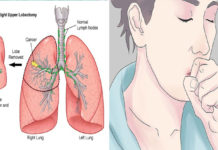Cancer is a dreaded disease worldwide. It has no boundaries and is often found in people of all ages, even in infants. When cells grow abnormally in the human bodies, cancer manifests itself where the anomaly lies. Cancer is named according to where it begins in the body. It may later spread to other parts of the body.
Cervical cancer refers to overgrown body cells in the lower tapering end of the uterus. The cervix links the vagina to the upper uterus (womb) where a fetus grows in pregnant women. Women over the age of 30 years are at risk of developing cervical cancer. Every year, approximately 12,000 women in America get the feared cervical cancer, and about 3,000 succumb to it.
The main cause of cervical cancer is Human Papillomavirus or simply( HPV). HPV is a regular virus that is contracted through sexual intercourse. At least 50% of sexually active individuals get HPV before the age of 50.Out of these; some women will, unfortunately, get cervical cancer.
Despite these alarming figures, cervical cancer is avoidable. Vaccines and regular screening tests prevent the HPV virus from further spreading of the disease. But if cervical cancer is discovered in its initial stages, it is treatable, and patients may continue enjoying a long healthy life.
7Heavier, Longer Menses

Abnormal Menstrual periods are a red flag for cervical cancer. This may be caused by pain and a strain of the cervix, perhaps due to the cervical cancer spread in the uterus. Excessive bleeding takes place if a woman has to change pads every 1-2 hours. Sometimes it can also be caused by hormonal imbalance and other inflammatory diseases in the pelvic, liver or kidney areas.






